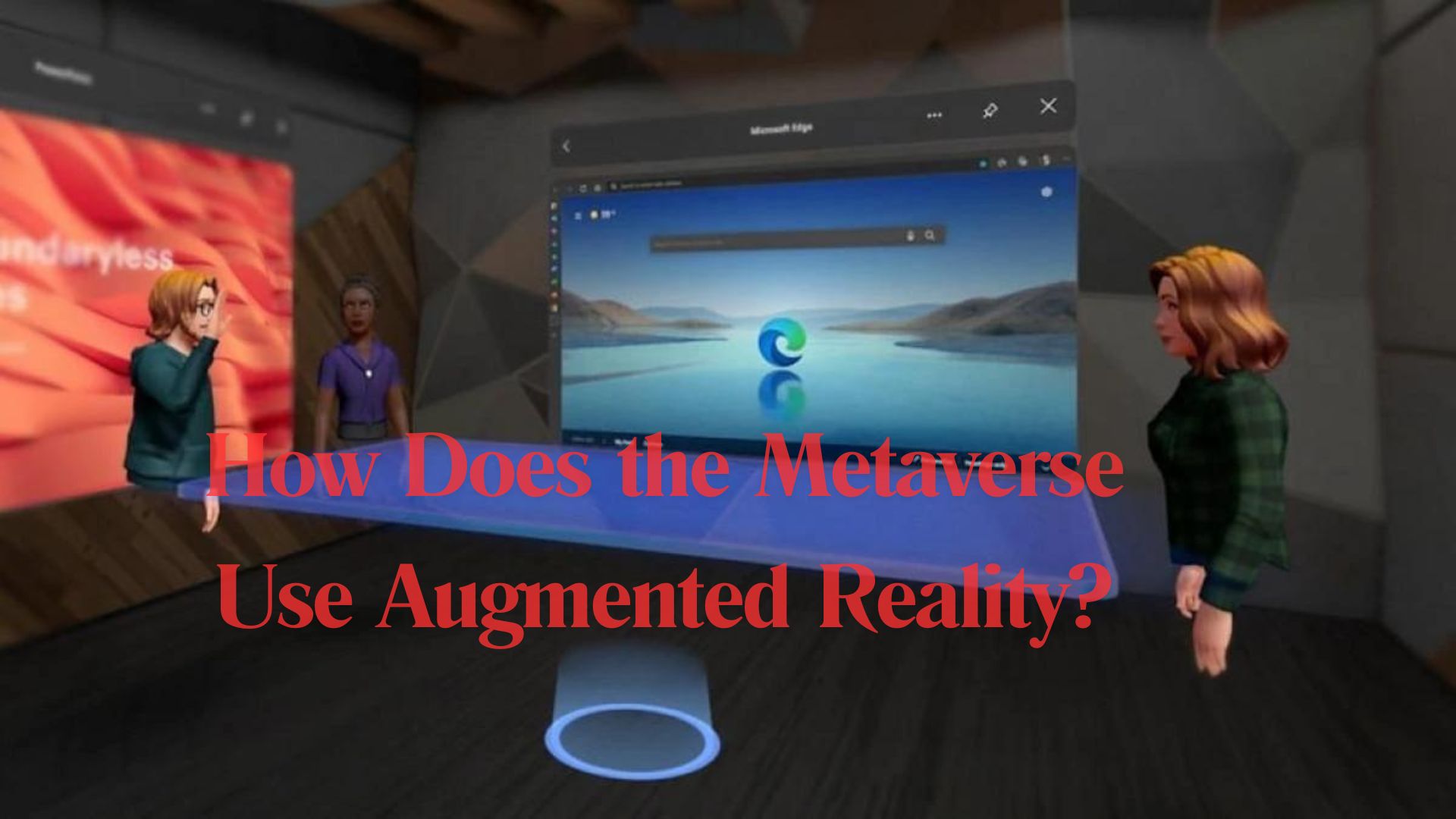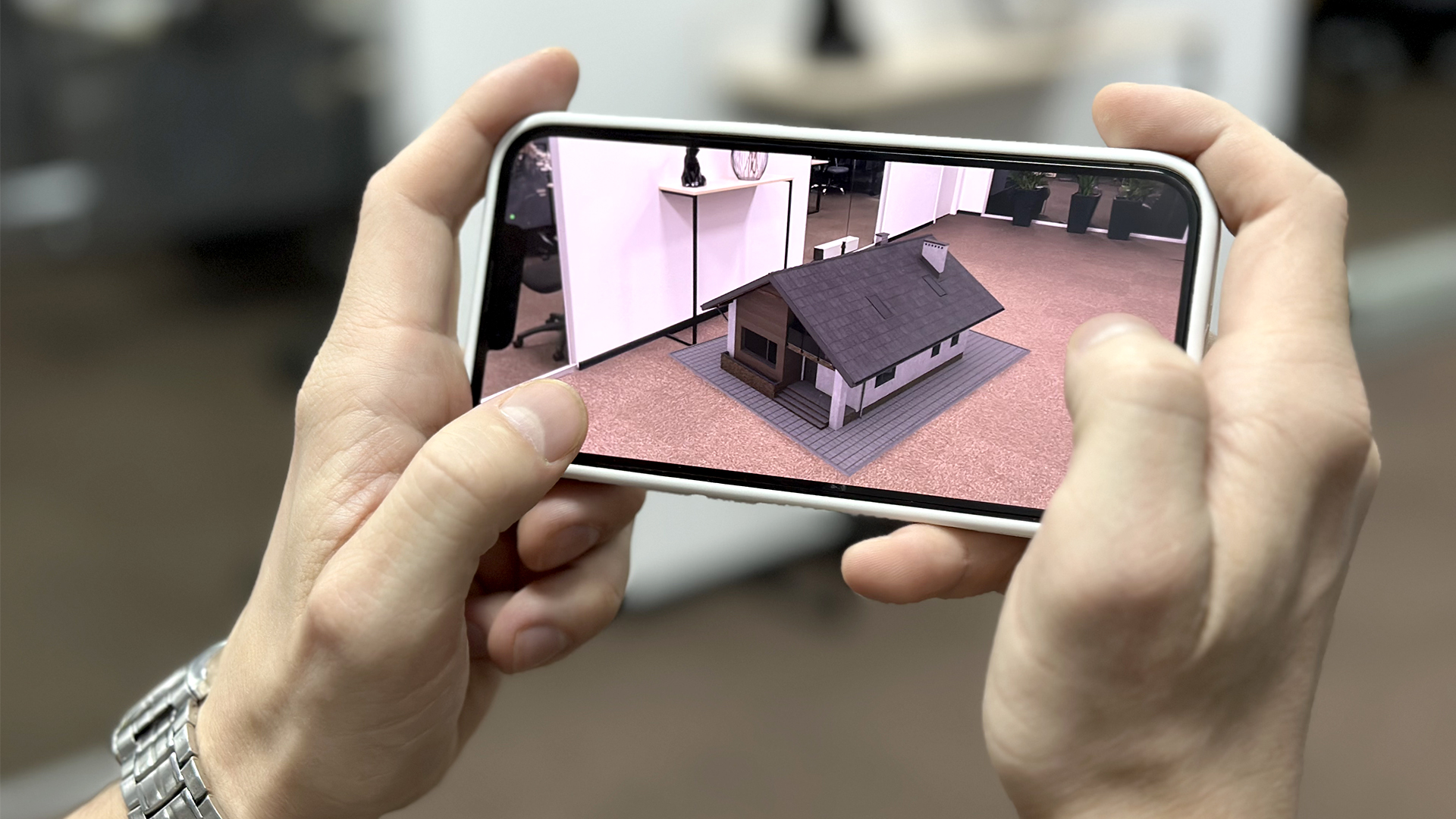
How Does the Metaverse Use Augmented Reality?
The metaverse evokes much anticipation in 2021 when Facebook rebrands to Meta. A little past its introduction, the word “metaverse” sharply shot to the top of Google’s search rankings. There have been a lot of available parts for the metaverse in this week’s AR discussions in the metaverse. Two of these are augmented reality Reality, reality, and reality allows you to visit the metaverse.
Rather than the traditional physical world, users can create and exist as digital avatars and experiment with the infinite number of worlds that have sprung up around technology. Because of its exceptionally high versatility, augmented reality has firmly, Realityckly, become the most popular technology. Based on forecasts, over 1.7 billion devices with augmented reality technology will be outthere by 2024 worldwide. What degree of augmented reality will metaverseRealitytions be because of? Investigating the different applications of Augmented Reality in the metaverse is essential.
Definition of Augmented Reality

In this case, “AR” r“presents the technology that improves our perception of the physical world. Augmented reality can empower usRealitynses of nature thanks to the implemented digital features which could be interacted with if necessary. When augmented reality explanations are processed, the augmented reality programs come up with the probability to transmit both visual and auditory information in real-world existing. The popular augmented reality apps might operate efficiently on mobile cameras and displays. Users would enrich their connection with the natural habitat using augmented reality programs.
Augmented reality can undoubtedly make all environments more realistic by providing a variety of digital components. Digital layers could be one of the elements of the metaverse reality that will be augmented to create a deeper, more profound one. The technology of augmented reality (AR) provides Real-time overlay here.
- Variation of colors depending on changes in situations.
- Addition of labels.
- I am inserting real-time directions with navigation apps.
- Modifying user appearance or the environment by utilizing filters on Instagram and Snapchat.
- Superimposition of 3D models, images, and other digital information on real-world objects and surroundings.
Since the aim is to bring a more realistic experience while immersing oneself in the metaverse, augmented reality is the right tRealitydo this by overlying virtual reality. For AR featurRealityhe metaverse, the user will need peripherals like a headset or glasses. Oddly, mixed reality is the abilityRealityraded glasses to allow systems to interact with virtual elements—is what the company, Mountain View official said.
An example can be wearing AR glasses and seeing all the information on the entire object with just a glance. One possibility is to wear augmented reality goggles when shopping in a virtual store, and you can visualize how different clothes and accessories might look on you. Suddenly, a new era in the shopping arena of the Internet can occur when these glasses’ superpower graphics feature resides on the garment’s garment’s overlain onto the body.
Variants of Augmented Reality
Upon reviewing the basics, complete AR may be a digital medium with no parallel for user experience. However, AR applications emerge in different versions allowing one to capture their core principles and utility. When date the AR application is in the digital arena, exploring other more popular AR options is advised.
-
Marker Augmented Reality
Most augmented reality systems use markers. The next edition would make it achievable for tools to take images, process them through AI algorithms such as object recognition and graphical marker tracking, and then identify the exact location. The objects are already registered in the database, and the augmented reality system, in its operation, takes advantage of the position and orientation of the marked objects to identify them specifically. The AR effect on Snapchat and Instagram comes first as examples of marker-based AR. The customers might use their cameras in real-time to take pictures markers could tell the users where to place the filters to get the best results.
-
Markerless Augmented Reality
Markerless augmented reality systems are the following kind. Augmented reality without markerRealitynot use does not e-programmed images or objects to aid identification. You can find successful ways to employ markerless augmented reality by answering tRealityt are the usAI use cases metaverse?”.
These kinds of applications provide pplcons provide ” navigation navigation, companies, and events. Markerless augmented reality systems put location-based data into relation with wtoe user is inquisinterestedcertain area about. Markerless augmented reality uses such techRealitys as a gyroscope,gyroscopesomaccelerometersal positioning system rathe-systems markers. These are the different types of AR without markers.
- Location-based Augmented Reality
- Superimposition-based Augmented Reality
- Projection-based Augmented Reality
- Contour-based Augmented Reality
Working Mechanisms for Augmented Reality
Augmented reality can be a summary reality tool for viewing the mechanisms of its operation. These overlays of virtual objects are superimposed on the real ones for the actual measures, individuals, and the environment. That allowed them to mix the computer-generated and real-world realms much smoother. First, understanding the main elements of augmented reality aids one in understanding a digital universe (the metaverse).
-
Sensors and Cameras
The AR algorithm’salgorithm’sr environment interpretations are, beyond doubt, the most importessentialof the hardware for augmented reality. Hopefully, aHopefully, a specific obRealitylocation and orientation in the real world through augmented reality apps will be pinpointable. Augmented reality applications will use sensors that include accelerometers, gyroscopes, cameras, and global positioning systems (GPS). As a result, this can add virtual elements to the reality.
-
Algorithms
ThRealitytional principles of an augmented reality show that reality systems can map the environment because of machine learning. Besides, the AI that determines the position of virtual items should be highly dependent on image processing techniques. The machine learning algorithms are the mandatory parts of the augmented reality systems for them to be properly functional.
-
Output Devices
Using output devices is also one of AR functionalifunctionality’s crucial elements. The instruments can help a user by making virtual objects appear in his environment. The AR headset is a great, excellent output device, but it is still not the most widespread. Besides, the augmented reality software that is beion smartphones is making people also toy with the technology and its virtual effects.
Applications of AR in the Metaverse
The second important step in understanding the significance of metaverse augmented reality is the use of casReacasualtye most significant future digital experience platforms will be the metaverse. Thus, the virtual vision of the user may encompass almost all kinds of industries in the metaverse. The following are a few examples of how augmented reality is applied in different sectors.
-
Architecture
Visualization should help support the use cases of architecture design. AR could help determine the ideal furniture for your home’s interior design. Augmented reality could help visualize the wall colors and hangings. On top of it, you can also visualize the appearance of other elements in the architecture of your home.
-
Healthcare
The references to certain issuspecifich as the question use cases in the metaverse?” also cover healthcare. Health issues become a natural diamond fundamental mental ‘extended reality.’ Augmented reality has already beRealitynecessary part of medical education, enabling doctors and medical students to see visual reality. It can be resRealitye for students and doctors regarding the correct visualization of human anatomy.
Moreover, it makes it easier for students first to explore MRIs and other medical images from different angles. For example, students can figure out the things of a surgeon’s part in a live operation of a case study where the whole thing is viewed from a surgeon’s perspective.
-
Tourism
The applications of AR in the metaverse would also support new applications in the tourism and hospitality sectors. Users can rely on AR in the metaverse to learn more about the destinations they want to visit. You can think of such augmented reality use cases as an alternative tour guide who helps you explore the attractions in new countries. Augmented Reality could help intRealityan entirely new transformative experience in tourism.
-
Retail Market
Augmented reality has also shown a reliance on the metaverse by bringing about areas of application in the retail sector, which has a considerable cumulative impact on the metaverse. Consumers can look at 3D images of various products and be enamored with items. AR, in the way of mitigating buyers’ feebuyers’is augmenting real-time online shopping. For example, before buying a dress online, you could find out how you would look in such a dress.
-
Education
The application of augmented reality (AR) in the viRealityorld of the metaverse would, in annabsolute the education sector. Interactive learning experiences enabled by augmented reality can be the driRealitytransformation in modern classrooms. New possibilities could come where students will not just watch the representations of the universe using virtual elements but get involved in them. Such illustrations of augmented reality in the metaverRealitynstrate that it (augmented reality) can supplemenRealityculum activities with engaging content and equally boost the retention rate of learners. For instance, students are more likely to participate in classes related to the solar system with the support of virtual overlays of planets.
How Augmented Reality Works in the Metaverse?
The metaverse kicked off with great expectations in 2021 when Facebook transformed into Meta. Soon after its deployment, ‘metaverse’‘‘became the top-ranking item searched on Google. Conversations about augmented reality in the metaverRealitycate the importance of many aspects of metaverse development. Augmented reality and virtual reRealityrovide the technologies to are part of the metaverse.
It can substitute the real nature, and people can try various digital avatars and even interact with different virtual worlds. It’s the reason VR has become quickly popular. According to the expectations, more than 1.7 billion augmented reality devices should be in use globally by 2024. How will augmented reality shape the metaRealityInvestigating the different uses of augmented reality in the metaverReality must.
Definition of Augmented Reality
In this context, “AR” means “he” technology that enhances our perception of the physical world. Augmented reality can potentially relieve’ the perception of the natural world by incorporating digital features that may be interacted with. As the processes of augmented reality are explained, Realit Realitythasotential to provide visual and audio data within actual ecosystems. Some popular augmented reality apps may function flawlessly on mobile devices. Users could enhance their interaction with the natural world by utilizing augmented reality apps.
Augmented reality can potentially potentially replace the environment by superimposing various digital elements on top of it. Digital overlays could be used in the metaverse augmented reality equation to enhance the immersive metaverse experiences. Using augmented reality (AR), some exaRealityf examples off lays are,
- Variation of colors depending on changes in situations.
- Addition of labels.
- I am inserting real-time directions with navigation apps.
- Modifying user appearance or the environment by utilizing filters on Instagram and Snapchat.
- Superimposition of 3D models, images, and other digital information on real-world objects and surroundings.
For a more accurate portrayal of the natural world, augmented reality perfectly compRecorporealityal reality in the metaverReality will require specific equipment to use augmented reality features in the metaverse, like a headset or glasses. CuriouMixedty refers to the Reality of specific upgraded glasses to facilitate interactions with virtual components.
For instance, picture yourself with augmented reality glasses and see all the product details with a glance. Another option is to utilize augmented reality goggles when shopping in the metaverse so you can see how different outfits might appear on you. A new era in internet shopping might begin with the revolutionary glasses, which will digitally superimpose the garment design on your body.
Variants of Augmented Reality
After going over the basics, it’s clear i’sit’s AR could completely change how people interact with digital content. Nevertheless, into AR’s use and value by delving into several AR iterations by delving into several AR iterations. If you’re trying to figure out how to implement AR in the metaverse, these are a few more prominent AR versions to consider.
-
Marker Augmented Reality
The most common kind of augmented reality systems use markers. This new version would allow devices to take pictures, process them using image recognition and marker tracking, and pinpoint the perfect spot to put virtual things. The photos are already in the database, and the augmented reality system uses the location and orientation of the tagged objects to identify them effectively. The AR filters on Snapchat and Instagram stand out the most as examples of marker-based AR. Users may take pictures in real-time with real-time cameras, and markers could show them where to put filters for the best results.
-
Markerless Augmented Reality
Markerless augmented reality systems are the following kind. Augmented reality without markerRealitynot use does not e-programmed images or objects to aid identification. You can find successful ways to employ markerless augmented reality by answering the thethe the metaverse?” for example””exampleplicat navigation, entexampleses, and events are all supported. Markerless augmented reality systems use location-based data to determine the user’s search quuser’s a given area. Technologies like gyroscopes, accelerometers, and global positioning systems are utilized in markerless augmented reality. These are the reality of AR without markers.
- Location-based Augmented Reality
- Superimposition-based Augmented Reality
- Projection-based Augmented Reality
- Contour-based Augmented Reality
Working Mechanisms for Augmented Reality
The definition of augmented reality provides a quiRealityview of its operation. It generates overlays of virtual objects onto actual items, people, and environments. This allowed them to create virtual environments seamlessly, blending the digital and physical realms. To understand how augmented reality (AR) contributes to the metaverse rse, it is helpful to understand its key components first.
-
Sensors and Cameras
Sensors, which the AR algorithm uses to interpret its environment, are the most essential part of the hardware for augmented reality. With tyentetalentedty apps, it m may make itble ablenpoint an object’s precise object and orientation. Augmented reality applications use accelerometers, gyroscopes, cameras, and global positioning systems (GPS). Consequently, it can help incorporate virtual features into the real world.
-
Algorithms
The explanation for augmented reality working mechanisms also shows that AR systems map the physical environment through machine learning. In addition, image processing techniques are also a crucial highlight of the AI algorithms, which determine the ideal position for placing virtual objects. Machine learning algorithms are essential for ensuring that the AR systems can function according to desired use cases.
-
Output Devices
Output devices are another notable addition among the components in the working ability—the —th—natural reality viewviewal objects. One of the most prominent examples of an output device for AR systems is the head-mounted display or headset. Individuals also use their phones to explore the functionalities of augmented reality.
Applications Realityn the Metaverse
The following important highlight in understanding the significance of metaverse augmented reality would refer toRealto reality. Metaverse will become a significant platform for digital experiences in the future. Therefore, you can envision digital user experiences for almost every sector through the metaverse. Here are the applications of AR in different sectors within the metaverse.
-
Architecture
Architectural use cases could be better supported by visualization. You may use augmented reality to find the peRealityieces of furniture for your house’s interiorhouse’s. One might better understand how different wall colors and hangings would look using AR. It lets you picture how various parts of your home’s design come together.
-
Healthcare
The references to questions like “What are AI use cases in the metaverse?” also draw attention toward healthcare. Augmented reality has become a reality in medical training and education. It can assist students and healthcare professionals in accurate visualization of human anatomy.
In addition, it offers the flexibility for scanning MRIs and other scanned images from unique perspectives. For instance, learners can find important information about a surgical process from the real-time perspective of a surgeon during an actual procedure.
-
Tourism
The applications of AR in the metaverse would also support new applications in the tourism and hospitality sectors. Users can rely on AR in the metaverse to learn more about the destinations they want to visit. You can think of such augmented reality use cases as an alternative tour guide who helps you explore the attractions in new countries. Augmented Reality could help intRealityan entirely new transformative experience in tourism.
-
Retail Market
The impact of augmented reality on improving tRealityverse would also point to the use cases for the retail market. Users could view 3D representations of different products before purchasing them. In a way, AR could help resolve consumer apprehensions during virtual shopping. For instance, you could determine your appearance in a specific dress before purchasing it.
-
Education
The use cases of AR in the metaverse would also help transform the education sector. Augmented reality can help transRtransRealityrin rooms with interactive learning experiences that allow students to learn through virtual elements—such examples of augmented reality in the metaverReality improvement in the curriculum alongside the retention of learners. Learners are more likely to pay attention in a class about the solar system with virtual overlays of planets.
How is Augmented Reality Different from Virtual Reality?
The fundamental concepts related to applications of AR in the metaverse also invite curiosity regarding the impact of virtual reality. How are the aRealitisnsrearealityRealityerent from AR? As the name implies, virtual reality is entirely viRealitywhile AR utilizes real-world surroundings. Both technologies are crucial for developing the metaverse and its interactions. Virtual reality offers experieRealityat can help replace physical surroundings with simulated environments.
On the other hand, augmented reality denotes the phRealityreality you witness arRealityu. Reality has an additional layer of information. The most important highlight of AR is that any individual can experience augmented reality through smartpRealityAugmented reality focuses on magReamarginalityaand lue of user experiences in the metaverse.
Importance of Augmented Reality for Metaverse
The various applications of AR in the metaverse demonstrate the potential advantages of AR in changing the world. While there is potential for more excellent benefits when used in tandem, augmented reality and metaverse RealitReality used. The description of augmented reality operating mechanisms in the metaverse emphasizes the description of augmented reality operating mechanisms in the metaverse emphasizes the relevance of reality aree as a digital environment that enables participants to create personalized virtual places. Please get to know the metaverse and its interconnected system of virtual worlds that can be accessed through virtual reality goggles and headsets. In what ways does AR impact the metaverse?
One can see the physical world in a new light using the metaverse. But nothing we could do would alter the external environment. Conversely, augmented reality can potentially replicate the environment by introducing new dimensions. To better comprehend the area in question, you can, for instance, use GPS data, texts, or pictures. Furthermore, improved depth perception is ensured by the spatial representation of all elements.
The most crucial aspect of metaverse augmented reality is that it triReatriviality into thinking the virtual components are their natural world. This might make the physical world more engaging and exciting for metaverse users. I find it interesting that Mark Zuckerberg has also said that AR is crucial for making the embodied web a reality.
Future of Augmented Reality for the Metaverse
One way that AI is shaping the metaverse is through augmented reality systems that use machine learning algorithms. Another thing that stands out is the significant role that augmented reality plays in making ealityetaverse a reality. Answers to the question “What are the us“ cases of AI in the metaverse?” and thmemetal’sthmemetal’she’scerent digital renaissance highlight a metaverse’smetaverse’sadditionaltures. The ever-increasing demand for augmented reality goggles, gadgets, and gaming aids will determine the fate of augmented reality in the metaverRealityrs could enjoy the next generation of 3D experiences if augmented reality technologies were widely used.
Users could become acquainted with augmented reality applications most easily on smartphones. Additionally, augmented reality’s potentreality’slity’svarious industries can potentially increase the metaverse’s relimetaverse’sapplications.
Final Words
When it comes becomes augmentedall augmented allealitygchangingegrating the metaverse into our everyday lives is made more accessible. Regarding the metaverse’s goalmaverse’smetaverse’sing the actual and virtual worlds, augmented reality use cases do their part.
At this time, augmented reality is being produced in healthcare, education, and retail. And yet, augmented reality has a long wayRealitybefore it becomes widely used. Having AR apps available is excellent news for augmented reality technology adoption. Discover the inner workings of augmented reality and how it enhRealityheenhancesothe r a more engaging experience.
[sp_easyaccordion id=”4458″]







